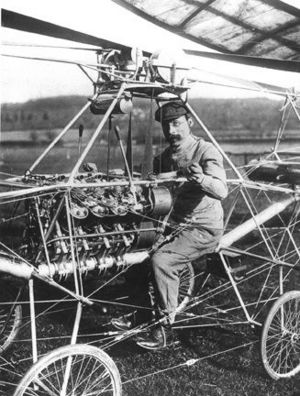Paul Cornu facts for kids

Paul Cornu (born June 15, 1881 – died June 6, 1944) was a French engineer. He is famous for building and flying the world's first successful manned helicopter.
Early Life and Invention
Paul Cornu was born in Glos la Ferrière, France. He was one of thirteen children. From a young age, he helped his father with his transport business. This early experience likely sparked his interest in machines and engineering.
Cornu made history by designing the world's first successful manned aircraft with spinning wings, known as a helicopter. Before his famous flight, he built a smaller, unmanned test model. This first model was powered by a 2 horsepower (hp) engine.
His larger, manned helicopter was powered by a 24 horsepower (18 kW) Antoinette engine. Paul Cornu himself piloted this amazing machine. On November 13, 1907, he made his historic flight in Normandy, France.
The First Free Flight
Before Cornu's flight, another French helicopter, the Breguet-Richet Gyroplane I, had managed to lift off. However, it was held in place by people on the ground. Cornu's flight was a huge step forward because his helicopter flew freely without any extra support.
His aircraft lifted him about 30 cm (1 ft) off the ground for 20 seconds. This was a major achievement in aviation history! Unfortunately, this early helicopter was hard to control. It only made a few more short flights. Paul Cornu was a true pioneer, but he had to keep working to support himself. He continued to make bicycles for a living instead of developing his helicopter further.
Later Life and Death
Paul Cornu died in 1944 in Lisieux, France. His home was destroyed during a bombing raid by the Allies. This happened during the D-Day landings of World War II.
See also
 In Spanish: Paul Cornu para niños
In Spanish: Paul Cornu para niños


